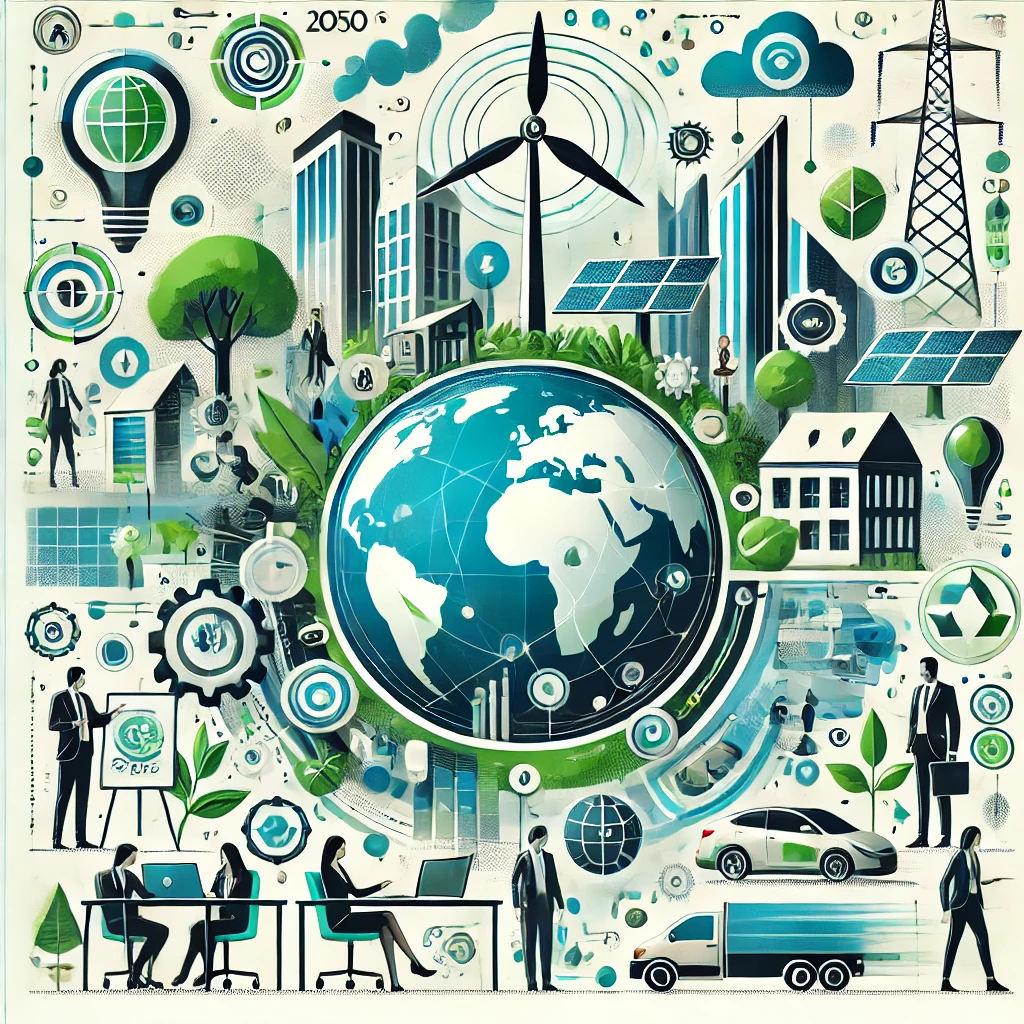The Global Push for Carbon Neutrality by 2050

As climate change becomes an ever-pressing issue, nations, businesses, and global organizations are intensifying efforts to achieve carbon neutrality by 2050. This ambitious goal is aimed at reducing greenhouse gas emissions to net zero, ensuring that any remaining emissions are balanced by initiatives such as reforestation, carbon capture, and clean energy development. Achieving this target is critical for limiting global temperature rise and mitigating the severe impacts of climate change.
What Is Carbon Neutrality?
Carbon neutrality, or net-zero carbon emissions, means achieving a balance between emitting carbon and absorbing carbon from the atmosphere through natural or technological solutions. For a company, city, or country to reach carbon neutrality, it must drastically reduce emissions and compensate for the rest by offsetting it through methods like planting trees, investing in renewable energy, or utilizing carbon capture technology.
Key Drivers Behind the Global Push
- International Agreements and Policies: The 2015 Paris Agreement was a landmark moment in the global fight against climate change, with nearly 200 countries committing to limit global warming to below 2°C above pre-industrial levels. As part of this commitment, many countries have pledged to achieve carbon neutrality by 2050. Policies at national levels, like the European Green Deal and the U.S. rejoining the Paris Agreement, further reflect the global momentum toward achieving this goal.
- Corporate Leadership: Large corporations are stepping up, adopting sustainability practices, and setting net-zero targets. Tech giants like Apple, Microsoft, and Google have already committed to becoming carbon neutral or negative. Their efforts include using renewable energy, developing carbon capture technologies, and reducing emissions throughout their supply chains. Companies are realizing that sustainability is not only a responsibility but also a business advantage in a world increasingly conscious of environmental impact.
- Technological Advancements: Technology plays a critical role in the carbon-neutral future. From renewable energy sources like wind and solar power to electric vehicles and carbon capture technologies, innovation is driving the decarbonization of industries. Smart grids, energy storage, and advancements in nuclear energy are also expected to contribute significantly to the goal of carbon neutrality.
- Consumer and Investor Pressure: With consumers becoming more environmentally conscious, businesses are increasingly held accountable for their carbon footprint. Investors are also prioritizing sustainability, with Environmental, Social, and Governance (ESG) factors becoming crucial in investment decisions. Companies with strong climate action strategies are being rewarded, while those lagging are facing greater risks, both financially and reputationally.
Challenges to Achieving Carbon Neutrality
Despite the global push, significant challenges remain. Developing countries, which still rely heavily on fossil fuels for economic growth, may struggle with transitioning to clean energy without sufficient financial and technological support. Additionally, some industries—like heavy manufacturing, aviation, and agriculture—are harder to decarbonize due to their reliance on energy-intensive processes.
There’s also the challenge of ensuring equitable transitions. The move toward carbon neutrality should not deepen existing social inequalities. Countries and businesses must ensure that vulnerable communities, particularly in developing nations, are supported through investments in green jobs, training, and infrastructure.
The Role of Individuals
Individuals also have a crucial role to play in the transition to a carbon-neutral world. By adopting sustainable practices such as reducing energy consumption, using public transport, eating plant-based diets, and supporting companies with strong environmental commitments, consumers can drive demand for more sustainable products and services.
Conclusion
The global push for carbon neutrality by 2050 is essential for preventing the most catastrophic impacts of climate change. Achieving this goal will require concerted efforts from governments, businesses, and individuals. While the road ahead is challenging, the increasing commitment to sustainability, coupled with technological innovation, gives hope that a net-zero future is within reach.
As the world races toward the 2050 target, every step taken today will shape the future of the planet, making it imperative for all sectors of society to act now.






Responses